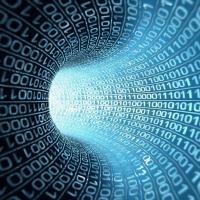What You Should Consider to Make the Best Use of Your Collected Data

You see recommended videos on YouTube based on past viewing history. Your fitness tracker congratulates you for meeting a goal. Your phone alerts you that you are approaching your data limit. What do these scenarios have in common? They are all notifications given based on data that has been gathered about your actions.
We live in a world where data is constantly being recorded for later use. For those in the software industry, determining the timing of when to use that data is critical to making the most of the information.
One aspect to consider is data freshness. When was the data collected? You don’t want to make decisions—or, worse, reach out to a customer—based on stale information. This can lead to invalid conclusions and potentially tarnish how customers perceive you.
The freshness of the data depends on the data set itself. For example, you can have daily goals on your fitness tracker that use real-time data to alert you about how close you are to achieving your goal throughout the day, while your electricity billing information may be collected based on the previous month’s data, and taxes are based on previous year’s data.
You also should be aware of what type of process is used to gather data. Not all data processes are equal. A batch process runs on a specified schedule, such as every day. With this type of process, depending on how often it runs or when it was last collected, you may want to wait until the data is refreshed. When data is collected in real time, the information is received instantaneously. Be cautious of data dependencies. For example, do you really have all the information, or is there a dependency on another process that has yet to run?
The question of when to distribute the analyzed data can also play an important role in your data use. You don’t want to invest time and money in something that few customers are going to see, use, or want. For example, sending out birthday notifications may seem like a personable gesture, but if it’s sent months after the customer’s actual birthday, the reception will not be the same.
Knowing what time of day will have the greatest impact is beneficial, too. Gathering information on when there is the highest volume of usage can help determine peak hours. This information, in turn, can be used to determine the best times to send out notifications to reach the largest number of customers.
Understanding the timing of your data is pivotal to making the most of the information. You should take into account data freshness, the data-gathering processes and any dependencies between them, and when to distribute information. Data can be a powerful tool when used correctly, and timing is key to unleashing its power.
Catherine Cruz Agosto is presenting the session Data Quality at the Speed of Work at the STAREAST 2017 conference, May 7–12 in Orlando, FL.

